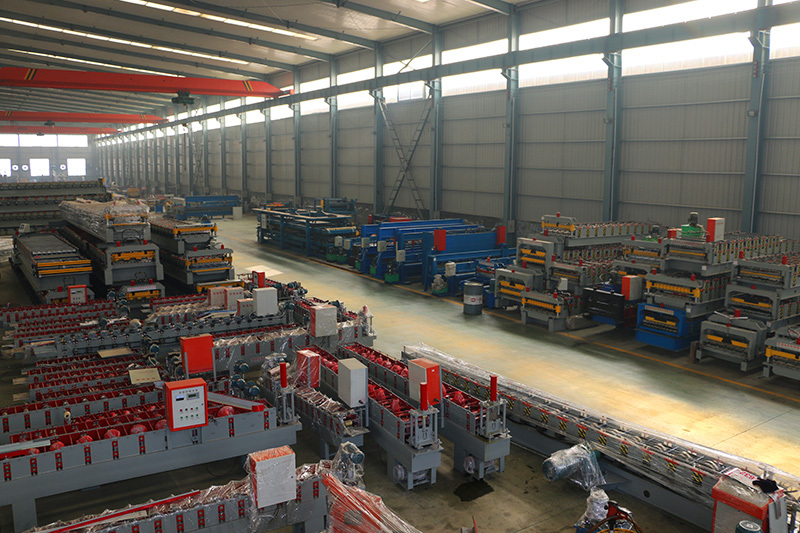Understanding Automatic Roll Forming Machines: Revolutionizing Manufacturing Processes

Automatic roll forming machines are advanced pieces of equipment used in various manufacturing processes to create metal products with complex shapes and profiles. These machines utilize a continuous bending process, where a strip of metal is fed through a series of rollers that progressively shape it into a desired cross-section. This efficient technique enables manufacturers to produce long lengths of uniform products, ranging from roofing sheets to structural components, with high precision and minimal waste.
One of the most significant advantages of using an automatic roll forming machine is its ability to enhance production efficiency. Unlike traditional manufacturing methods that may require extensive labor and time for setup and operation, automatic roll forming machines can produce large quantities of products quickly and consistently. This speed not only meets the demands of high-volume production but also reduces labor costs, allowing companies to allocate resources more effectively.
Moreover, the accuracy of automatic roll forming machines contributes to improved product quality. The precision of the rollers ensures that each piece produced is uniform, with minimal deviations in dimensions. This level of consistency is crucial in industries where matching components for assembly is essential, such as in construction and automotive manufacturing.
Another important aspect of these machines is their versatility. Automatic roll forming machines can be tailored to create a broad range of profiles suitable for various applications. By simply changing the tooling, manufacturers can switch from producing one profile to another, accommodating different projects without the need for extensive reconfiguration. This adaptability is invaluable in today’s fast-paced and ever-changing market environments.
Additionally, the integration of automation technology in these machines allows for enhanced control over the production process. With features such as programmable logic controllers (PLCs) and computer numerical control (CNC), manufacturers can monitor operations in real-time, adjust parameters on-the-fly, and even implement quality control measures throughout the production cycle. This capability not only streamlines the manufacturing process but also helps in maintaining high-quality standards.
Investing in an automatic roll forming machine can lead to a significant competitive advantage in the manufacturing sector. As industries strive for greater efficiency and quality, these machines represent a forward-thinking solution that meets both current and future demands.
In conclusion, automatic roll forming machines are an integral part of modern manufacturing processes, offering numerous benefits, including enhanced efficiency, precision, versatility, and automation. As the industry continues to evolve, understanding these machines will be crucial for anyone involved in manufacturing. By leveraging this technology, businesses can optimize their operations and maintain a competitive edge in the marketplace.
One of the most significant advantages of using an automatic roll forming machine is its ability to enhance production efficiency. Unlike traditional manufacturing methods that may require extensive labor and time for setup and operation, automatic roll forming machines can produce large quantities of products quickly and consistently. This speed not only meets the demands of high-volume production but also reduces labor costs, allowing companies to allocate resources more effectively.
Moreover, the accuracy of automatic roll forming machines contributes to improved product quality. The precision of the rollers ensures that each piece produced is uniform, with minimal deviations in dimensions. This level of consistency is crucial in industries where matching components for assembly is essential, such as in construction and automotive manufacturing.
Another important aspect of these machines is their versatility. Automatic roll forming machines can be tailored to create a broad range of profiles suitable for various applications. By simply changing the tooling, manufacturers can switch from producing one profile to another, accommodating different projects without the need for extensive reconfiguration. This adaptability is invaluable in today’s fast-paced and ever-changing market environments.
Additionally, the integration of automation technology in these machines allows for enhanced control over the production process. With features such as programmable logic controllers (PLCs) and computer numerical control (CNC), manufacturers can monitor operations in real-time, adjust parameters on-the-fly, and even implement quality control measures throughout the production cycle. This capability not only streamlines the manufacturing process but also helps in maintaining high-quality standards.
Investing in an automatic roll forming machine can lead to a significant competitive advantage in the manufacturing sector. As industries strive for greater efficiency and quality, these machines represent a forward-thinking solution that meets both current and future demands.
In conclusion, automatic roll forming machines are an integral part of modern manufacturing processes, offering numerous benefits, including enhanced efficiency, precision, versatility, and automation. As the industry continues to evolve, understanding these machines will be crucial for anyone involved in manufacturing. By leveraging this technology, businesses can optimize their operations and maintain a competitive edge in the marketplace.
Key words:
Previous Page
Previous Page:
recommend News
Share



